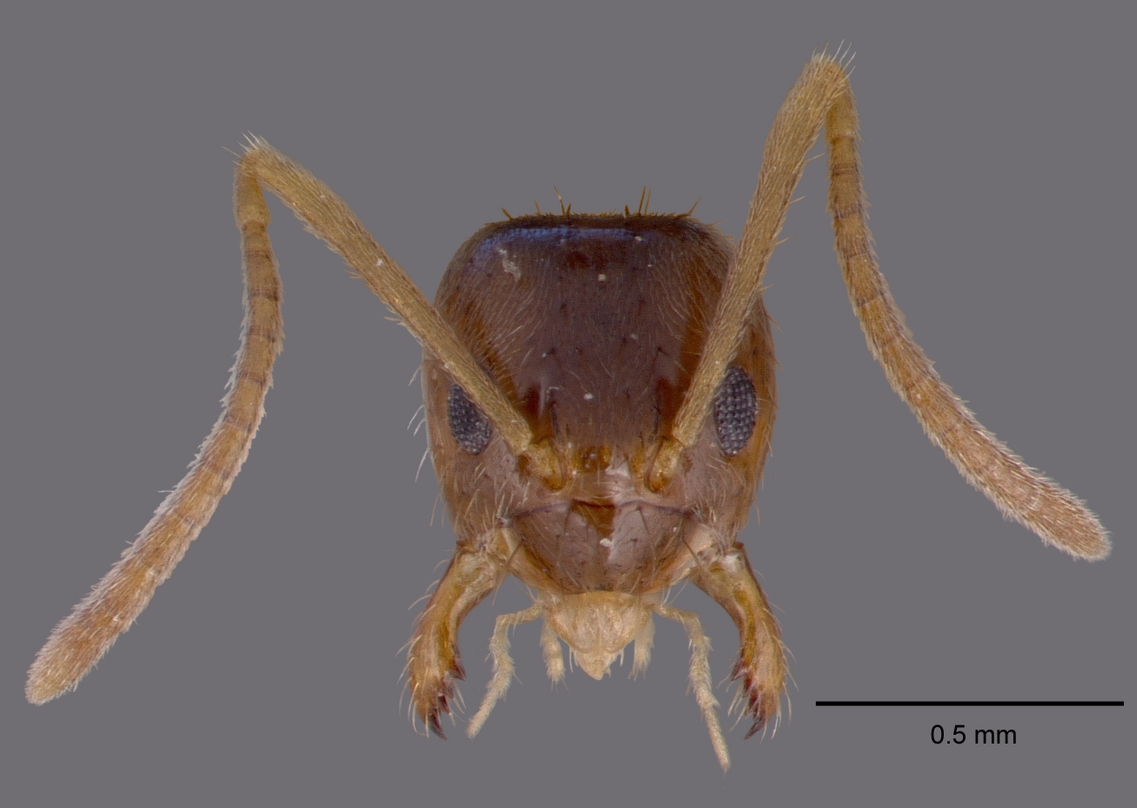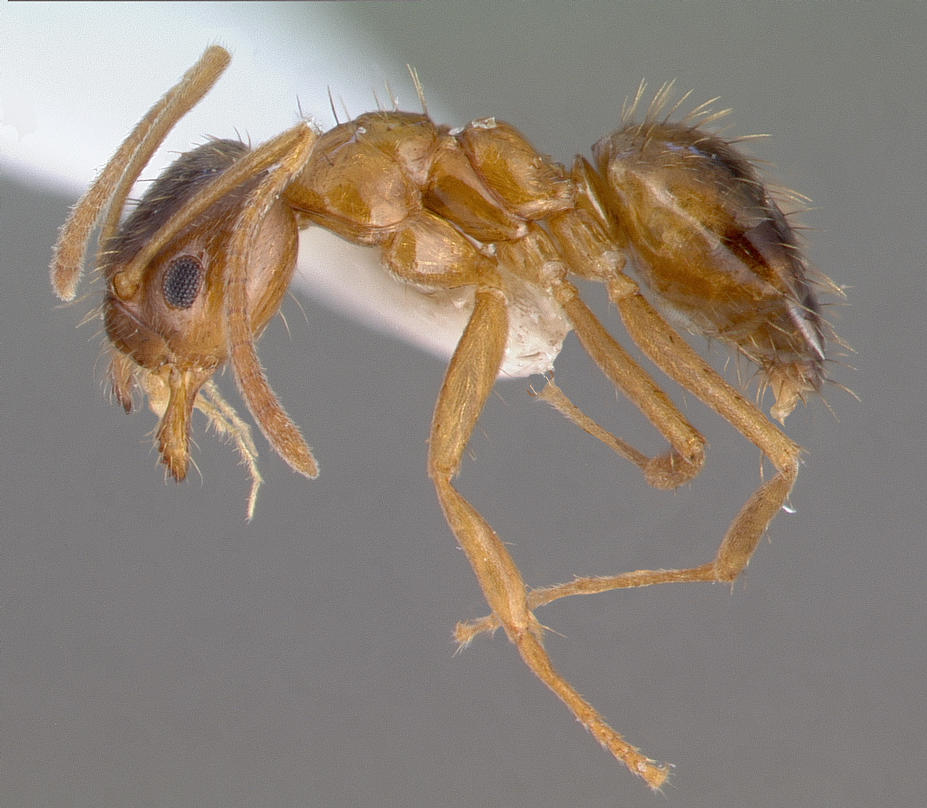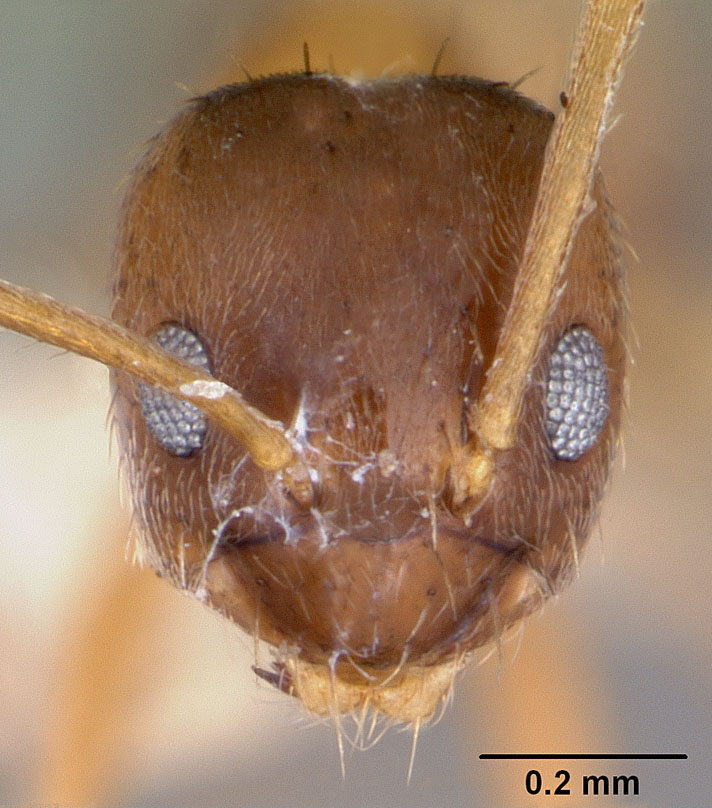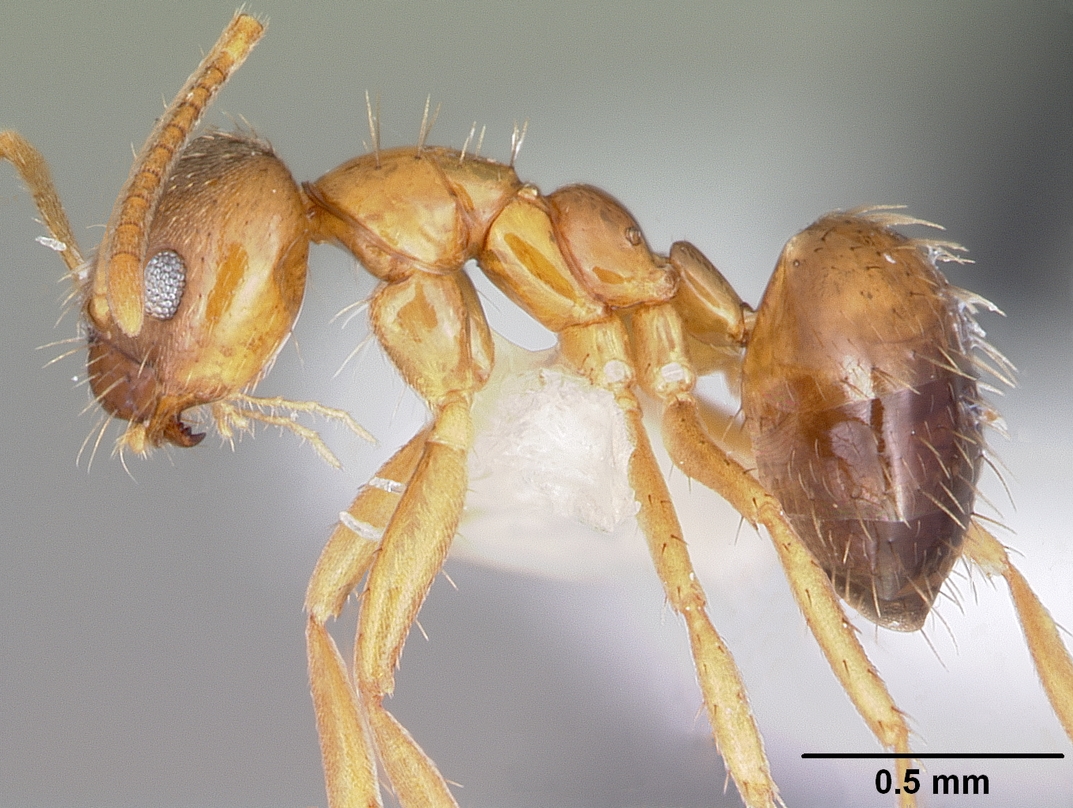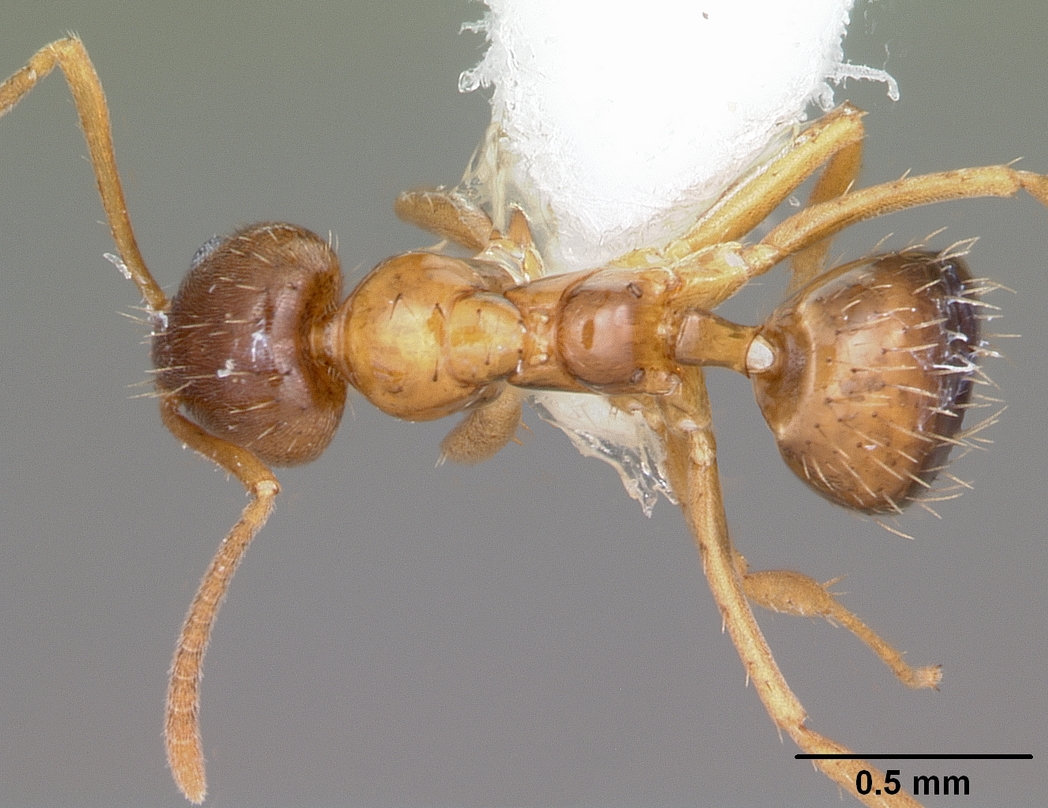Subfamily
FORMICINAE
Tribe LASIINI Nylanderia flavipes (F. Smith) |
|
Nylanderia flavipes, full face view of a worker (click image to enlarge). Photo courtesy of http://www.antweb.org/ |
Nylanderia flavipes, profile view of a worker (click image to enlarge). Photo courtesy of http://www.antweb.org/ |
Nylanderia flavipes, full face view of a worker (click image to enlarge). |
Nylanderia flavipes, profile view of a worker (click image to enlarge). Photo courtesy of http://www.antweb.org/ |
Nylanderia flavipes, dorsal view of a worker (click image to enlarge). |
|
Introduction Trager (1984) revised the genus, then called Paratrechina, for the continental United States. LaPolla et al. (2010) elevated the subgenus Nylanderia to the generic level, which in effect, meant that all Nearctic Paratrechina species except for P. longicornis were now placed in Nylanderia. In 2012, Kallal and Lapolla (2012) revived the genus and provided an updated key for the Nearctic region. However, there are still some undescribed species in this group that which may be parasitic on other Nylanderia species. These species apparently do not have a worker caste, and the males are unusual in that they have characteristics of both males and workers. Links |
|


